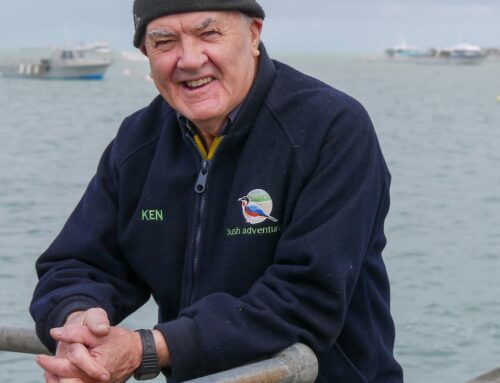The cost of importing coffee beans into Australia has never been more expensive, and there are few signs these record prices will ease anytime soon.
While wages, rents and operational costs account for the vast majority of what you pay for a coffee, inclement weather in coffee-producing regions overseas is also putting upward pressure on prices of everything from a servo cuppa to a specialty flat white.
And with global demand for coffee on track to outstrip supply within two decades, the industry is facing a tough financial grind.
Last week, Nestle Global CFO Anna Manz told investors rising input costs would affect margins in the coming six months.
“Coffee and cocoa are [contributing] definite upward pressure but we’ve got benefit elsewhere,” Ms Marz said.
And one of the world’s largest coffee roasters, Lavazza, recently told Bloomberg News higher bean prices, shipping costs and a stronger US dollar had added 800 million euros ($1.3 billion) to the Italian company’s costs in the past two years.
While it doesn’t tell the whole story, recent analysis from Sydney-based Pablo and Rusty’s Coffee Roasters shows the coffee itself accounts for about 12 per cent of the price of your average small takeaway flat white.
The company’s CEO, Abdullah Ramsay, said the escalating prices were initially something the company’s buyers thought might blow over in three to six months.
“I think that view has changed … both on the coffee front, which we don’t see resolving anytime soon, and also on the Australian dollar front,” he said.
So what’s behind the rise in price?
The world’s biggest coffee-producing regions have both been hit at once
Arabica coffee beans grow best when the temperature stays between 18 and 22C, and there’s about 1,200mm of rain distributed throughout the year, according to Brazilian agronomist Jonas Leme Ferraresso.
In Brazil, where the vast majority of the world’s arabica coffee beans are produced, growers are harvesting a second drought- and heatwave-plagued crop.
This season, Brazil’s arabica crops have sweltered through temperatures in the high 20s, and haven’t received enough rain to reach optimal yields.
“For arabica, which is more sensitive to high temperatures, when the temperature exceeds 33C, the plant’s photosynthetic rate approaches 0 per cent, meaning there is no adequate development of leaves, seeds and roots,” Mr Ferraresso said.
“[From August last year to now] on various days and times, almost all arabica regions experienced this problem, especially during the period of development and expansion of coffee beans.”
Arabica prices climbed to just under $8.50/kg at the start of July.
Of Brazilian coffee growers, 72 per cent are small-hold farmers on around 20 hectares of land, according to a 2017 agricultural census taken by the Brazilian Institute of Statistics and Geography.
Higher prices have helped most stay profitable, even though yields are down, Mr Ferraresso said.
“Coffee prices on the international markets, remaining at current levels, and with our exchange rate, is a profitable business,” he said.
“The biggest problem today is related to labour, which is scarce and expensive, and with each agricultural year, the situation worsens.”
At the same time in Vietnam, where robusta coffee is the dominant crop, production and exports have been slashed as the country endures one of the worst droughts on record.
Robusta is the main variety used for instant coffee, and the preferred bean for larger global producers, many of which have taken their significant buying power into the arabica market, and maintained the upward pressure on prices there.
The world’s third-largest producer, Colombia, will also harvest a smaller crop this season, according to USDA estimates.
Robusta beans are now at record highs, nearly double where they were a year ago.
Consumers will taste the difference in their cup
Despite the difficult season, arabica production in Brazil is still expected to lift slightly in 2024/25, and world-ending stocks (the measure that refers to everything left over after the year’s consumption) are tipped to rise slightly.
But even with the expected recovery in Brazilian coffee volumes, Australian importers expect quality to drop.
“What they’re seeing at the moment, which will filter down to consumer level, is they have a very low screen size, because they’ve had such poor weather,” FTA Coffee general manager David McKennariey said.
Mr McKennariey said arabica had been trading well above prices seen at any point over the past five years, putting financial pressure on local roasters.
“It has always been the cheapest arabica as a generalisation, and as coffee prices have gone up, roasters have pivoted away from some of the more expensive origins to Brazil,” he said.
“It has more than doubled compared to what it has been over the past a couple of years.”
At the Blacklist Coffee Roasters’ warehouse in south-eastern Perth, production manager Ernest Ho is paying “80 to 90 per cent” more for green beans this year than he was in 2021.
In the past year alone, prices lifted 16 per cent.
The company, which sells its roasted beans all over Australia, relies on backup suppliers and trains its roasting team to produce consistent results with multiple blends to ensure it is not over-exposed to price swings in any particular region.
“There are different regions around the world which can produce similar-tasting profile coffees, obviously a different cost,” Mr Ho said.
“At the end of the day, what matters to our consumers is what’s in the cup of coffee.
“We also try and relay the message that, because coffee is a natural product, as much as we try and lock in a particular taste profile for coffee, there’s always going to be some variations involved.”
The rise in home brewing changed the game too
A combination of pandemic-era restrictions on hospitality venues, followed by a cost-of-living crisis, has driven many Australians to become their own baristas at home.
Mr Ho can see that playing out through Blacklist’s online sales to individuals, which grew 80 per cent per year in 2020/21 and 2021/22.
“This last two fiscal years, we’re seeing a slowdown of the growth in terms of online,” he said.
“But we are generally seeing a lot more consumers buying bags of coffee … then brewing that at home.”
Mr McKennariey said supermarket coffee bean brands, particularly at Aldi, had proven particularly popular with at-home coffee makers.
“Lots of Australian households that have [bean-to-cup] espresso machines … are purchasing from supermarkets,” he said.
“Luxio, in the Aldi supermarket, instead of that being manufactured in Germany and shipped out, they roast it locally in Melbourne.
“They’re offering single origins. The quality of that coffee, personally, I think is comparable to some of the better quality cafes from maybe 10 years ago.”
In any case, expect to start paying more for coffee
Two macro forces are combining to almost guarantee higher coffee prices in the future: climate change and population growth.
The land available with the right conditions to cultivate coffee is expected to shrink because of climate change, according to researchers at Zurich University.
Meanwhile, demand for coffee keeps expanding, with current projections from World Coffee Research estimating a 35 million bag shortfall in robusta alone.
A greater number of people making coffee at home is a positive sign for an industry that will be charging higher prices for coffee in the future, according to Mr Ramsay.
Comparing it to the willingness of enthusiastic home cooks to spend more on a meal at a restaurant, Mr Ramsay said Australians needed to start getting used to paying more for coffee.
“Cafe prices need to move, and hopefully people understand why they’re moving,” he said.
“Especially for independent cafes — larger chains can use coffee as a loss leader, or as a break-even exercise because it gets people in the door and they can spend on other things.
“But [for smaller cafes] a day comes when your back’s against the wall. So it’s like ‘OK, my choice is go out of business or raise prices’.”
Posted , updated



